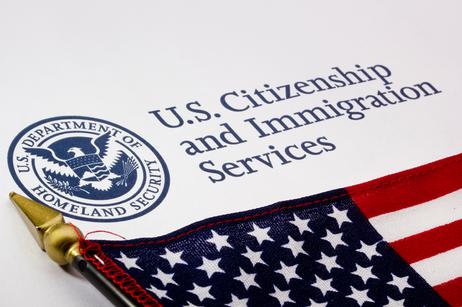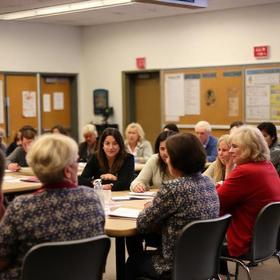Immigration reform has been a hotly contested issue for decades. With Congress deadlocked on the issue, state legislatures across the country have passed strict anti-immigration bills, leaving millions of immigrants in fear of deportation. One source of fear for undocumented families is that local school districts that require birth certificates, social security numbers, and other vital information in order to enroll students will reveal the family’s undocumented status and lead authorities to apprehend them. The fear of legal retribution is so great that for many families, removing their children from school is their only choice.
Plyler v. Doe
The recent wave of state-based restrictions on enrollment of undocumented students is somewhat curious given that the Supreme Court ruled that these students have an equal right to education. In their 1982 ruling in Plyler v. Doe, the justices held that schools cannot:
- Deny a student enrollment based on undocumented status;
- Require different procedures to determine a student’s residency;
- Engage in any activities that may discourage a student from enrolling;
- Require students or their parents to document their immigration status;
- Ask questions that may expose a student’s immigration status;
- Require a student’s social security number for enrollment purposes.
Furthermore, as a result of the ruling, school officials involved in enrollment and intake of new students are not obligated to enforce U.S. immigration laws. Yet, despite these clear-cut guidelines regarding student enrollment, public schools keep finding ways to exclude immigrant and undocumented children.
This video explains the DACA parameters.
Alabama – The “Show Me Your Papers State”
In 2011, Alabama, angry over the lack of progress on immigration at the federal level, passed a sweeping immigration bill. Among the many provisions of the bill was a requirement that all individuals possess identification papers in order to prove their citizenship, proof that had to be provided when getting a driver’s license, hooking up home utilities, and enrolling children in school. When the law passed, thousands of immigrant children were pulled out of school by their parents due in part to the law’s requirement that teachers provide yearly reports on the immigration status of every student in their classroom. The situation was so bad, in fact, that many immigrant families completely withdrew from society, rarely leaving their homes.
Many aspects of the Alabama law have since been declared unconstitutional or have been otherwise blocked by lawsuits. After just seven months, the law was heavily revised by the state legislature once it became clear the original bill was too far-reaching.
Michigan Law Denies Programs to Undocumented Students
The Michigan legislature recently passed a bill authorizing the expenditure of $1 million for programs to help English language learners. However, while seemingly a step in the right direction, the legislature further declared that schools could only apply for funding if they could prove the money would not go to any undocumented students. The federal government intervened, but despite warnings from the Department of Justice, the original Michigan law remains on the books.
This video explains the challenges facing DACA students.
New Methods of Checking Immigration Status
Other school districts have skirted federal guidelines and the directives that resulted from Plyler v. Doe that prohibit school personnel from asking students for their social security number. These districts argue that the guidelines do not prohibit asking parents for their child’s social security number upon enrollment. Essentially, since it wasn’t explicitly prohibited by past guidelines, districts maintain the practice is okay.
Other school districts have taken even more invasive measures. Some schools now require a parent’s social security number before they are allowed on campus for parent-teacher conferences. Fingerprints have also been required of parents in some school districts. Actions such as these provided the impetus for the recent guidelines produced by the Obama Administration.
Second Time Around
In 2011, after receiving dozens of complaints about districts refusing enrollment or asking for unnecessary documentation for students, the United States Department of Education issued a letter to thousands of public school districts reminding them that all children – legal residents of this country or otherwise – are entitled to a free public education. That directive explicitly reminded school personnel that they couldn’t demand information about students that would serve the purpose of denying them access to education.
In particular, the federal government’s 2011 letter sought to address the increasingly common practice of districts in the Deep South demanding to see visas or passports of Latino students in order to determine citizenship. Local legislators in Alabama went so far as to propose a bill that would require both students and their parents to provide proof of citizenship before enrollment could take place. The bill stalled, however, after its sponsor learned that it violated the Plyler v. Doe decision.
Although no one expected the 2011 guidelines to make an immediate impact, it was assumed that public school districts would eventually fall in line and comply. However, complaints regarding barriers to enrollment have persisted, thus necessitating the most recent set of guidelines. This time, the directive, which comes from both the Departments of Education and Justice, is much more explicit in outlining what schools can and cannot do with regard to enrollment. Specifically, schools cannot:
- Request any information for the purpose of denying access to education based on race, color or national origin;
- Bar a student without a birth certificate from enrolling;
- Refuse enrollment because a parent does not provide a social security number.
This video explains the constant fear of deportation which DACA students face.
Rising Enrollment Causing Concerns About Budgets
In states where immigration – both legal and illegal – is very high, the rapid increase in student populations is causing districts much concern regarding lack of adequate facilities, large class sizes, and budget shortfalls. According to a 2005 report by the conservative lobby Federation for American Immigration Reform, nearly $12 billion is spent each year by the states for the educational services provided to children of illegal immigrants. The report also points out that since many illegal immigrants are both poor and non-English speakers, districts bear an additional burden to provide free and reduced meals and English as a Second Language (ESL) services. Tightening enrollment policies to exclude undocumented children is then seen as a necessary evil to spare districts from budget crises.
However, the federal government doesn’t see it this way. Efforts by districts to exclude some children from school are seen as violations of federal law, Constitutional law, and students’ civil rights. Regardless of which side one takes on the issue, all can likely agree that problems with education, immigration, civil rights, and budget concerns are all interrelated and that these problems need to be fixed sooner rather than later.
Questions? Contact us on Facebook. @publicschoolreview














